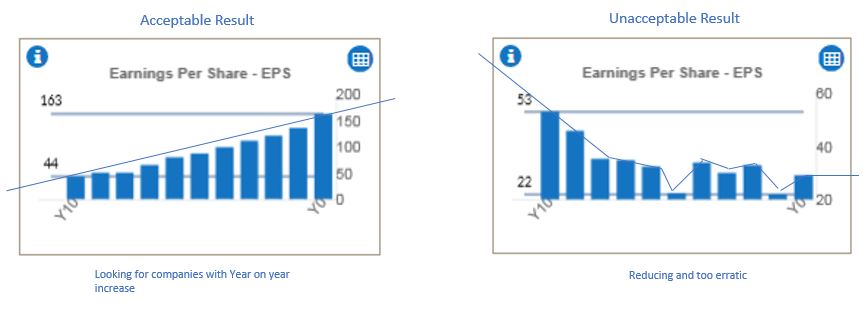Earnings per share is the portion of a company’s profit allocated to each outstanding share. Earnings per share is an indicator of a company’s profitability.
We look for a year-on-year increase of 10% or more, but it is important to look for consistency. It is better to find a company that has a consistent 10% or close, than a company that has 10%, 17%, 25%, 6%, and so on.
Watch out for share splits; the EPS value will drop as more shares will be on the market to divide by the earnings (profit).
Negative EPS Meaning :
Companies don’t always turn a profit. Sometimes they lose money, in which case their earnings are negative. When earnings are negative, then EPS will be negative, too. A negative EPS tells you exactly how much money the company lost per share of outstanding stock, which is why you’ll also see it called “net loss per share.” If a company with 100 million shares loses $16 million, then its EPS is negative 16 cents. No, the company isn’t going to send someone to shake you down for 16 cents per share. But you’ll still “pay” for the loss in another way: A net loss decreases the value of the firm, which typically lowers the value of the stock.
Earnings per Share is Post-tax Profit divided by the the average number of shares in issue.
EPS will therefore be negative in the event that the company has made a loss rather than a profit.

